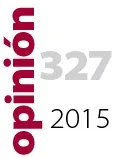No to more Deaths in the Mediterranean. Yes to more Political Will and Coherence

* "This article has been written under the auspices of the European projects NIEM (National Integration Evaluation System: Measuring and Improving Integration of Beneficiaries of International Protection) which is co-financed by the AMIF (Asylum, Migration and Integration Fund)".
Elena Sánchez Montijano , Research Fellow, CIDOB
May, 12, 2015 / Opinión CIDOB, n.º 327
According to the UNHCR, 3,419 people died trying to reach European coasts in the Mediterranean in 2014 and 1,754 more have died so far in 2015. Frontex claims that during 2014 almost 300,000 immigrants were intercepted while attempting to enter continental Europe. Of these, 170,760 were on the central Mediterranean route. This data reveals a reality that is difficult to accept and requires an urgent response with political will and coherence.
The political and media storm raised on April 19th following the death of nearly 900 people in the Mediterranean after the boat they were travelling in capsized close to the Libyan coastline has given way to a new calm. The staging of a meeting of EU foreign and interior ministers, followed by an extraordinary summit of heads of state and government, allowed attempting to reach European coasts to show, beyond doubt, that the events in the Mediterranean attempting to reach European coasts greatly concerned them. Nevertheless, neither the ten-point plan agreed at the first meeting, nor the 17 measures approved at the second appear to be able to respond to the deaths of people off our coasts.
The main premise from which they must begin is that the EU does not have the capacity to respond to the more than 50 million refugees in the world (UNHCR figures), nor the dozens of conflicts being provoked by all this forced mobility. Nevertheless, with coordinated action it can respond in the short term to two of the main necessities of thousands of people who cross the Mediterranean fleeing armed conflicts in fear for their lives and those of their families.
First of all, the EU and its member states will have to set objectives in the rescue of the thousands of people risking their lives in the Mediterranean. Coastline surveillance to avoid the deaths of more immigrants and refugees during the crossing seems not to be greatly complex in terms of either technology or budget. The increase in the budget for operations such as Triton and Poseidon agreed by European leaders must be focussed on both the surveillance of a safe route and on rescue in the case of necessity and emergency. This is the main problem and must as such it must be addressed.
Second, according to the UNHCR, 80% of the people currently attempting to reach Europe are victims of from forced displacement and as such are potential asylum seekers. Of the 626,065 people seeking asylum in the EU in 2014, according to Eurostat, 25% were under 18 years old and 20% were of Syrian origin. Despite the urgency of the requests, only 359,759 were decided/*resolved and of those 55% were rejected. The EU must ensure the Common European Asylum System is applied in all member states without further delay. An increase in the refugee quota of a few thousand as the only outcome of the events in the Mediterranean seems to be neither a satisfactory nor sufficient response.
The political failure of the European Union with regard to the rescue of people in the Mediterranean − which Amnesty International has already denounced − along with the lack of development of a common asylum policy makes it necessary to rethink the common steps to be followed in the longer term to provide a structural response to the phenomenon. Among the proposals should be mentioned those in which the EU and its member states take responsibility, at least in part, for what is happening. There can be no doubt of the necessity of establishing safe entry channels to Europe with the objective of reducing the risks of arrival and passage of asylum seekers, and ensuring the protection of their rights within the framework of the International Geneva Convention of 1951. Likewise, a coherent policy of cooperation with transit countries is also necessary. This collaboration cannot stop at mere agreements to externalise borders so that those countries take responsibility for the surveillance of their emigrants, as well as the borders that provide access to Europe. Ensuring that transit countries respect the principal international human rights treaties and are safe places for the duration of the refugees’ stay must also be priorities for the EU.
If anything is clear it is that the change in the ways migrant workers and asylum seekers enter the EU is the result of the past few years’ migratory policy. For example, the systematic closure of entry channels such as the Atlantic, the Greek border and the Baltic oblige people liable to seek refuge to exhaust all possibilities to reach Europe. This is the result of policies that force them to attempt to seek asylum on EU territory and the introduction of the visa requirement in all countries of origin.
Coherent action which rethinks the bases on which Europe's migratory policy rests must be advocated and must face the legal obligations contracted in international agreements. Ultimately, putting an end to the opening up of new, longer and more dangerous routes such as the central Mediterranean.
E-ISSN: 2014-0843